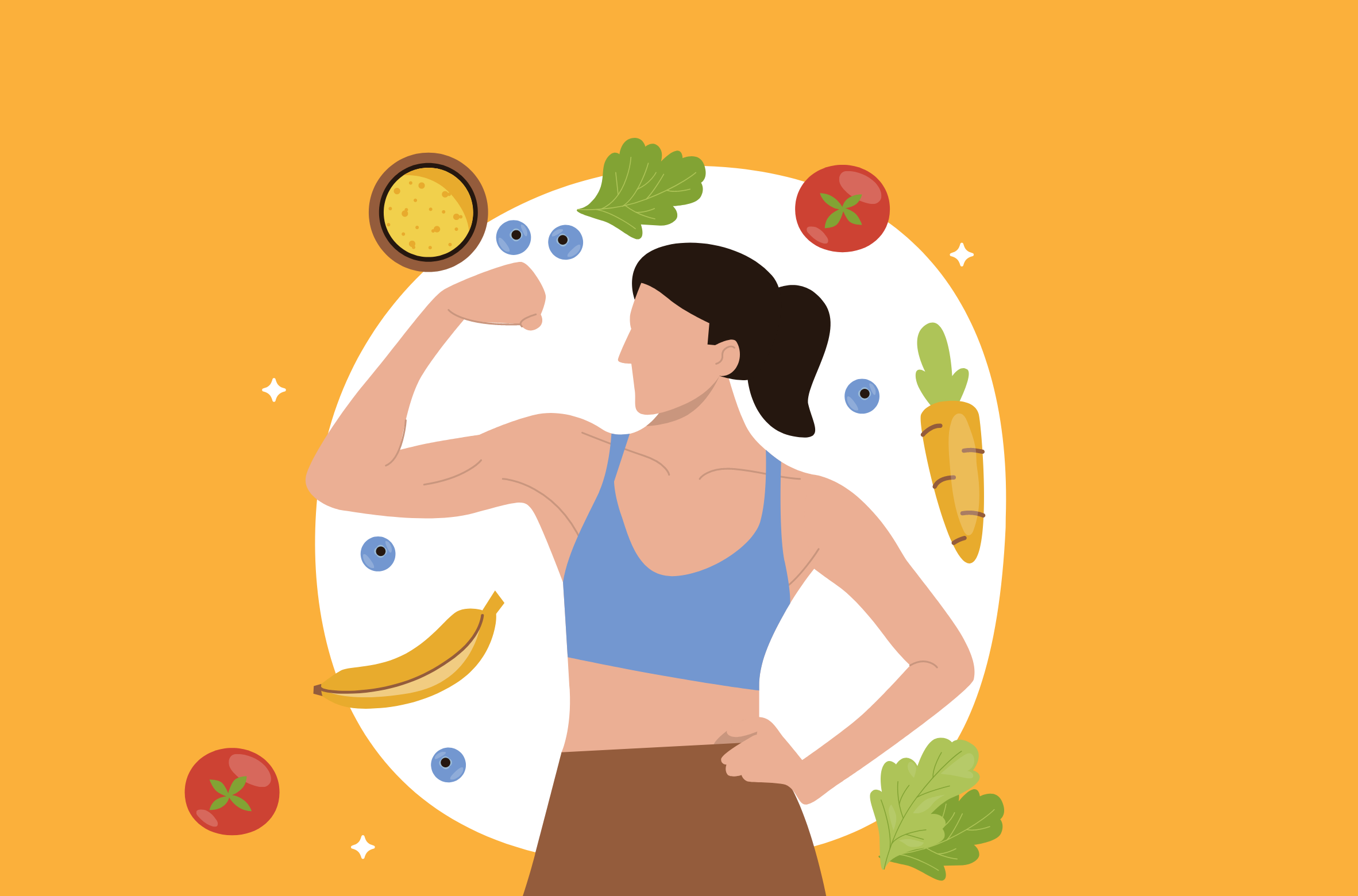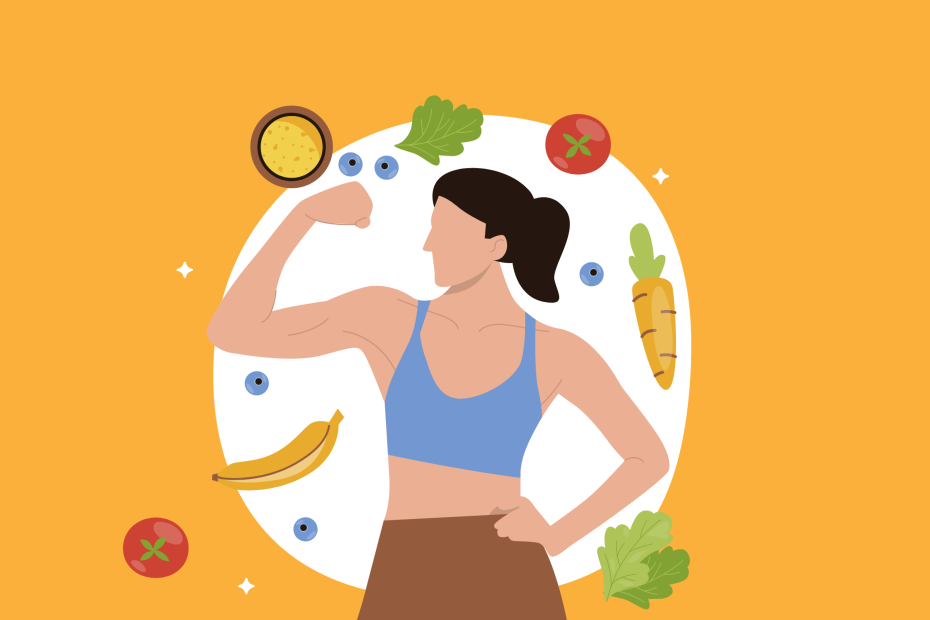You’ve heard the phrase, “you are what you eat,” meaning that the quality of your food determines the quality of your health. But it’s also literally true. Proteins from food builds muscle. Carbohydrates keep cells’ power stations running, fueling all the body’s activities. Fats line the membranes around cells, helping to control what goes in and out.
These are just some of the many critical functions performed by proteins, carbohydrates, and fats in the body, and it’s why they should make up the bulk of our diet. For this reason, they are considered macronutrients (“macro” meaning “large”) because these are nutrients we need in relatively large amounts.
It makes sense, then, that micronutrients (micro meaning “small”) are nutrients we need in relatively small amounts. These include vitamins and minerals.
Keep in mind that most food is a combination of macro- and micronutrients.
Let’s look at each group in more detail.
Proteins
In large part, proteins come from meat (such as chicken, beef, pork, and seafood), but are also found in nuts, seeds, beans, eggs, and milk products.
Carbohydrates
Carbohydrates (“carbs”) include starches, sugars, and fiber. Starches and sugars are primarily where glucose (“blood sugar”), the body’s source of energy, comes from.
Simple carbohydrates (also known as “simple sugars”) are found in things like fruit, milk, and table sugar. They are broken down quickly and send a burst of glucose into the bloodstream. This can feel like a surge of energy, which can be followed by a lull or “crash” when the glucose is used up.
These can make your blood “syrupy” and harder for your heart to pump around your body. Long term, blood sugar spikes can cause heart, kidney, eye, and nerve damage.
Complex carbohydrates are also known as starches. These include bread, pasta, potatoes, and cereals/grains like rice, wheat, maize (corn), and barley. Starches are broken down more slowly, providing a steadier supply of glucose.
Fiber is the undigestible part of carbohydrates. Vegetables and whole (unrefined) cereals/grains are excellent sources of fiber. Fiber is what helps slow digestion down, steadying glucose release. It also forms feces (“poop”) and helps people avoid constipation by promoting regular bowel movements.
Fats
Fats are found in oils (including olive, peanut, soybean), butter, red meat (beef, mutton), cheese, nuts, and avocados, among other foods. There are two main categories of fats:
Unsaturated fats—these (such as olive and other oils) are liquid at room temperature and are generally considered healthier. They promote a better balance of “good” and “bad” cholesterol.
Saturated fats—these are solid at room temperature (think of butter, ghee, or bacon grease). These are considered less healthy, because they tip the balance of good and bad cholesterol toward the bad side. They also promote chronic inflammation.
(Trans fats are created by processing unsaturated fats to make them solid and therefore more like saturated fats. This makes them particularly unhealthy. Examples of trans fats include shortening. They can also occur from deep-frying foods.)
Vitamins
Vitamins are substances that are needed for a range of bodily functions, but that our bodies typically do not make. (The exception is vitamin D, which we can make from exposure to sunlight). This means we have to get these from food or supplements. Thirteen vitamins are considered essential for human health: A, C, D, E, K, and the B vitamins (thiamine, riboflavin, niacin, pantothenic acid, biotin, B6, B12, and folate).
Although vitamins are found in many different foods, here are some well-known examples:
• Vitamin A: carrots, tomatoes, milk
• Vitamin C: citrus fruits, strawberries, cabbage
• Vitamin D: fatty fish like sardines and salmon. And our skin makes it from exposure to sunlight.
• Vitamin E: peanuts and sunflower seeds
• Vitamin K: green leafy vegetables such as kale, spinach and collard greens
• The eight B vitamins: many animal- and plant-based foods
Minerals
Minerals are elements that are naturally found in the ground and in water, that our bodies need in small amounts. We also get these from foods we consume. Examples include calcium, sodium, potassium, iodine, and zinc.
Food is one of the best ways to get vitamins and minerals, because the body absorbs them very effectively from food—plus there may be additional healthful nutrients, such as fiber, that are also present.
Sometimes, doctors will prescribe supplements for people who don’t get enough of a particular vitamin or mineral. For example, people who live in less-sunny places may need vitamin D supplements. Older people may need calcium, due to the bone loss that naturally occurs with aging (calcium is an important component of bones).
How much is okay to eat?
Dietary needs vary with age, sex, fitness level, and special circumstances, like pregnancy. Children have different nutritional needs than adults. Females generally need fewer calories than males. Bodybuilders may need more protein. Pregnant women may need prenatal vitamins. For this reason—and as scientists have learned more about nutrition and health—dietary guidelines have become more general and flexible. The US Department of Agriculture (USDA) has replaced the food pyramid with a plate of four food groups: fruits, vegetables, grains, and protein—plus, off to the side, a smaller portion of dairy.
The general idea is this:
• Half of your plate should be vegetables and fruits
• One-quarter should be whole grains (or things made from whole grains)
• One-quarter should be proteins, such as seafood, poultry, and beans
• Dairy should play a smaller role overall. Think of it as a side rather than a main dish.
Overall, it’s better to choose:
• A variety of colorful vegetables and fruits (“eat the rainbow”) rather than the same few all the time. This ensures that we get a variety of vitamins and minerals.
• Whole foods over processed, refined foods (for example, brown rice rather than white rice). This is because refining can remove nutritious elements, such as a fibrous outer layer or vitamin- and mineral-rich inner layer.
• Unsaturated fat over saturated fat (for example, olive oil rather than butter or lard).
The Bottom Line
In order to function well for a lifetime, our bodies need a variety of macro- and micronutrients, eaten in moderation. It’s better to get these in a natural or whole (unrefined) state whenever possible.
Want to learn more?
American Heart Association
Cleveland Clinic
Food and Agriculture Organization of the United Nations
Harvard School of Public Health
National Institute of Aging
USDA
 share
share



